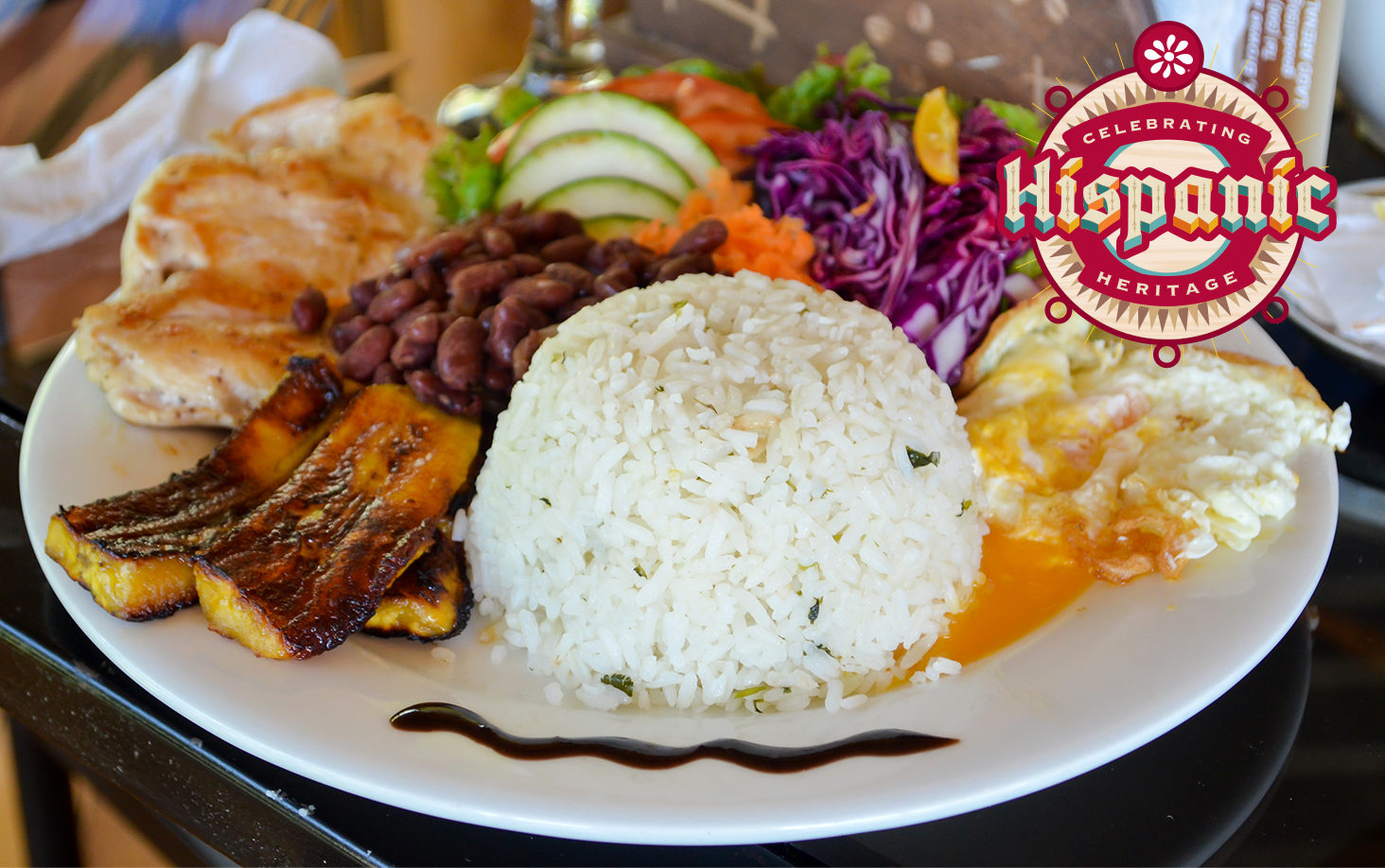Casado: The Ultimate Guide To This Spanish Delight You Need To Try
You might have heard about casado, but do you really know what it is? This traditional Costa Rican dish has been a staple in Central American cuisine for generations. It’s more than just food—it’s a cultural experience that brings people together. If you’re a food enthusiast or simply looking to explore new flavors, casado is something you need to try. So, let’s dive into the world of casado and discover why it’s so special!
Casado isn’t just another meal; it’s a reflection of Costa Rican hospitality and tradition. Whether you’re visiting the country or planning to cook it at home, understanding its history, ingredients, and cultural significance will enhance your appreciation for this dish. So, buckle up as we take you on a culinary journey!
In this article, we’ll cover everything you need to know about casado, from its origins to modern variations. We’ll also provide tips for cooking it yourself and where to find the best casado if you’re ever in Costa Rica. Let’s get started!
Read also:Andrea High The Rising Star Whos Making Waves In The Industry
What Exactly is Casado?
Let’s start with the basics. Casado is a traditional Costa Rican dish that’s often referred to as the national plate of the country. The name itself translates to “married” in Spanish, which refers to the harmonious combination of ingredients that make up the dish. A typical casado consists of rice, beans, salad, plantains, and a protein like chicken, beef, or fish. But there’s more to it than just the ingredients!
Key Components of Casado
- Rice: A staple in most casados, often flavored with sofrito or other seasonings.
- Beans: Usually black beans, cooked with spices and sometimes mixed with rice.
- Salad: A simple side dish made with lettuce, tomatoes, and cucumber, dressed with oil and vinegar.
- Plantains: Fried or baked plantains add a sweet touch to the savory meal.
- Protein: Chicken, beef, fish, or sometimes eggs, depending on preference.
These components come together to create a balanced and satisfying meal that’s both filling and delicious. But the beauty of casado lies in its adaptability. You can customize it to suit your taste, making it a versatile option for any occasion.
Origins and History of Casado
Now that we’ve covered what casado is, let’s explore its roots. Casado has been a part of Costa Rican cuisine for centuries, with its origins tracing back to the country’s agricultural past. Historically, it was a meal prepared by farmworkers who needed something hearty and nutritious to fuel their long days of labor. The simplicity and accessibility of the ingredients made it an ideal choice for rural communities.
Over time, casado evolved to include a wider variety of ingredients and became a symbol of Costa Rican identity. Today, it’s served in homes, restaurants, and even street vendors across the country. Its popularity has also spread to neighboring countries in Central America, where variations of the dish can be found.
Cultural Significance of Casado
Casado isn’t just a meal; it’s a cultural icon that represents the values of family, community, and tradition. In Costa Rica, sharing a casado with friends and family is a common practice, reinforcing social bonds and fostering a sense of belonging. It’s a dish that brings people together, whether it’s during a family gathering or a casual lunch with coworkers.
Moreover, casado reflects the country’s commitment to sustainability and locally sourced ingredients. Many of the components used in casado are grown and harvested within Costa Rica, supporting local farmers and reducing the carbon footprint of the meal.
Read also:Alejandro Vega The Rising Star Whos Taking The World By Storm
Where to Find the Best Casado
If you’re planning a trip to Costa Rica, finding the best casado should be on your to-do list. From upscale restaurants to humble sodas (local eateries), you’ll find casado served in various settings. Each place offers a unique twist on the classic dish, so it’s worth trying it in different locations to experience the full range of flavors.
Top Spots for Casado in Costa Rica
- El Bodegon del Pueblo: Known for its authentic casado, this restaurant in San Jose serves a hearty portion with all the traditional components.
- La Casa del Cacao: Located in the central market of San Jose, this soda offers a cozy atmosphere and a delicious casado at an affordable price.
- Restaurante La Casona: A family-owned restaurant in Heredia, famous for its generous portions and flavorful casado.
While these spots are highly recommended, don’t hesitate to explore local markets and street vendors. You might stumble upon a hidden gem that serves an unforgettable casado!
How to Cook Casado at Home
Can’t make it to Costa Rica anytime soon? No worries! You can still enjoy casado from the comfort of your own kitchen. Cooking casado at home is easier than you might think, and it’s a great way to introduce your friends and family to Costa Rican cuisine.
Ingredients You’ll Need
- 2 cups of cooked rice
- 1 cup of cooked black beans
- 1 head of lettuce, chopped
- 2 tomatoes, diced
- 1 cucumber, sliced
- 2 plantains, sliced
- Protein of your choice (chicken, beef, or fish)
- Olive oil and vinegar for dressing
Step-by-Step Guide
First, cook your rice and beans according to your preference. Then, prepare your salad by mixing the chopped lettuce, tomatoes, and cucumber. Dress it lightly with olive oil and vinegar. Next, fry or bake your plantains until they’re golden brown and crispy. Finally, cook your protein of choice and arrange all the components on a plate. Voila! You’ve got yourself a delicious casado.
Variations of Casado Across Central America
While casado is most commonly associated with Costa Rica, variations of the dish can be found throughout Central America. Each country puts its own spin on the classic formula, incorporating local ingredients and flavors.
Guatemalan Casado
In Guatemala, casado often includes tortillas and a side of curtido, a pickled cabbage salad. The protein choices might also vary, with pork being a popular option.
Nicaraguan Casado
Nicaraguan casado typically features nacatamales, a type of tamale wrapped in plantain leaves, alongside the traditional components. It’s a more elaborate version of the dish, reflecting the country’s rich culinary heritage.
Health Benefits of Casado
Aside from being delicious, casado offers several health benefits. The combination of rice, beans, and vegetables provides a balanced intake of carbohydrates, protein, and fiber. The use of fresh, locally sourced ingredients ensures that the meal is packed with nutrients. Plus, the absence of processed foods makes casado a healthier option compared to many other convenience meals.
Tips for Making Casado Healthier
- Use brown rice instead of white rice for added fiber.
- Opt for grilled or baked protein instead of fried.
- Limit the amount of oil used in cooking to reduce calorie intake.
By making a few simple adjustments, you can enjoy casado while maintaining a healthy diet.
Fun Facts About Casado
Here are a few interesting tidbits about casado that you might not know:
- Casado is often served with a side of gallo pinto, another popular Costa Rican dish.
- The dish gets its name from its “married” components, which are said to complement each other perfectly.
- In some regions, casado is served with a slice of avocado or cheese for added richness.
These fun facts add another layer of intrigue to an already fascinating dish!
Conclusion
In conclusion, casado is more than just a meal—it’s a cultural experience that embodies the essence of Costa Rican cuisine. From its humble beginnings as a farmworker’s meal to its current status as a national treasure, casado has captured the hearts and taste buds of people around the world. Whether you’re enjoying it in a restaurant in San Jose or cooking it at home, casado is a dish that’s sure to leave a lasting impression.
So, why not give it a try? Share your thoughts in the comments below, and don’t forget to explore our other articles for more culinary adventures. Happy eating!
Table of Contents
- What Exactly is Casado?
- Origins and History of Casado
- Cultural Significance of Casado
- Where to Find the Best Casado
- How to Cook Casado at Home
- Variations of Casado Across Central America
- Health Benefits of Casado
- Fun Facts About Casado
- Conclusion


